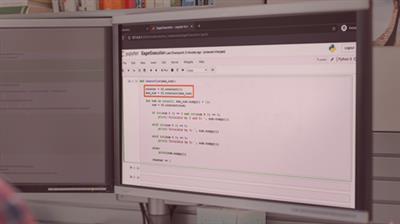Getting Started with Tensorflow 2.0

Getting Started with Tensorflow 2.0
MP4 | Video: AVC 1280x720 | Audio: AAC 44KHz 2ch | Duration: 3 Hours 9M | 387 MB
Genre: eLearning | Language: English
This course focuses on introducing the TensorFlow 2.0 framework - exploring the features and functionality that it offers for building and training neural networks. This course discusses how TensorFlow 2.0 differs from TensorFlow 1.x and how the...
TensorFlow has long been a powerful and widely used framework for building and training neural network models. In recent years though other frameworks such as PyTorch have gained popularity specifically due to their intuitive programming model which uses dynamic execution graphs. Now TensorFlow 2.0 offers all the ease of use of other frameworks along with TensorFlow's performance and functionality. TensorFlow's use of the Keras high-level API makes designing and training neural networks very straightforward while eager execution makes prototyping and debugging models simple. First, you will explore the basic features in TensorFlow 2.0 and how its programming model differs from TensorFlow 1.x versions. You will understand the basic working of a neural network and its active learning unit, the neuron. Next, you will compare and contrast static and dynamic computation graphs and understand the advantages and disadvantages of working with each kind of graph. You will get hands-on exploring execution in TensorFlow 2.0 in eager execution mode and harness the performance efficiencies of static graphs by using the tf.function decorator to decorate ordinary Python functions. You will then learn how a neural network is trained using gradient descent optimization and how the GradientTape() library in TensorFlow calculates gradients automatically during the training phase of your neural network model. Finally, you will learn how different APIs in Keras lend themselves to different use-cases. Sequential models consisting of layers stacked one on top of the other are simple and have long been supported by Keras. You will also explore the Functional API and model subclassing in Keras and then use these APIs to build regression as well as classification models When you're finished with this course, you will have the skills and knowledge to harness the computational power of the TensorFlow 2.0 framework and choose between the different model-building strategies available in Keras.
Buy Premium From My Links To Get Resumable Support,Max Speed & Support Me

https://uploadgig.com/file/download/6F1AB19472478131/uxirr.Getting.Started.with.Tensorflow.2.0.part1.rar
https://uploadgig.com/file/download/33dC5b282d7861fc/uxirr.Getting.Started.with.Tensorflow.2.0.part2.rar
https://uploadgig.com/file/download/6D8097575F171416/uxirr.Getting.Started.with.Tensorflow.2.0.part3.rar

https://rapidgator.net/file/980d56f9b0032201cdaf83f14bc4e6c4/uxirr.Getting.Started.with.Tensorflow.2.0.part1.rar
https://rapidgator.net/file/37bb87fe46107aebf2fe73dcabb2a9b5/uxirr.Getting.Started.with.Tensorflow.2.0.part2.rar
https://rapidgator.net/file/7cb9a3d06fd7307f2b9a77ccd2414e6e/uxirr.Getting.Started.with.Tensorflow.2.0.part3.rar

http://nitroflare.com/view/12ACEA42BC58A0D/uxirr.Getting.Started.with.Tensorflow.2.0.part1.rar
http://nitroflare.com/view/CF2A0A8A03E1862/uxirr.Getting.Started.with.Tensorflow.2.0.part2.rar
http://nitroflare.com/view/C8E0B290721DC8C/uxirr.Getting.Started.with.Tensorflow.2.0.part3.rar

Comments (0)
Users of Guests are not allowed to comment this publication.